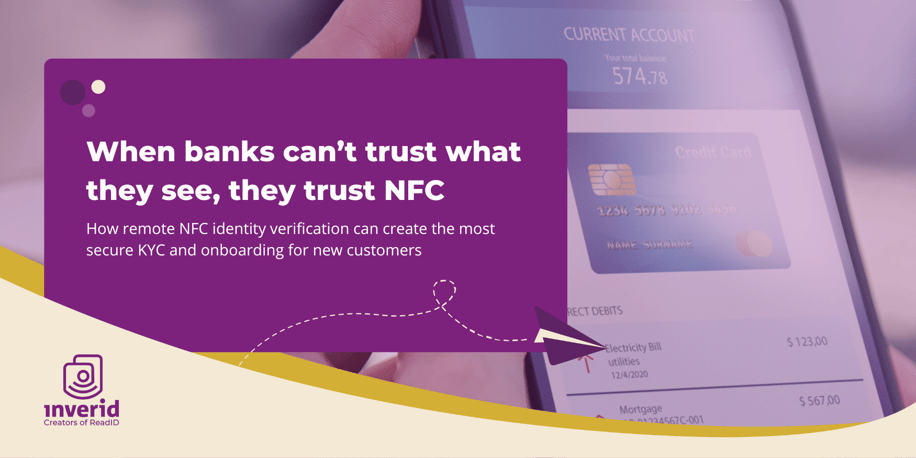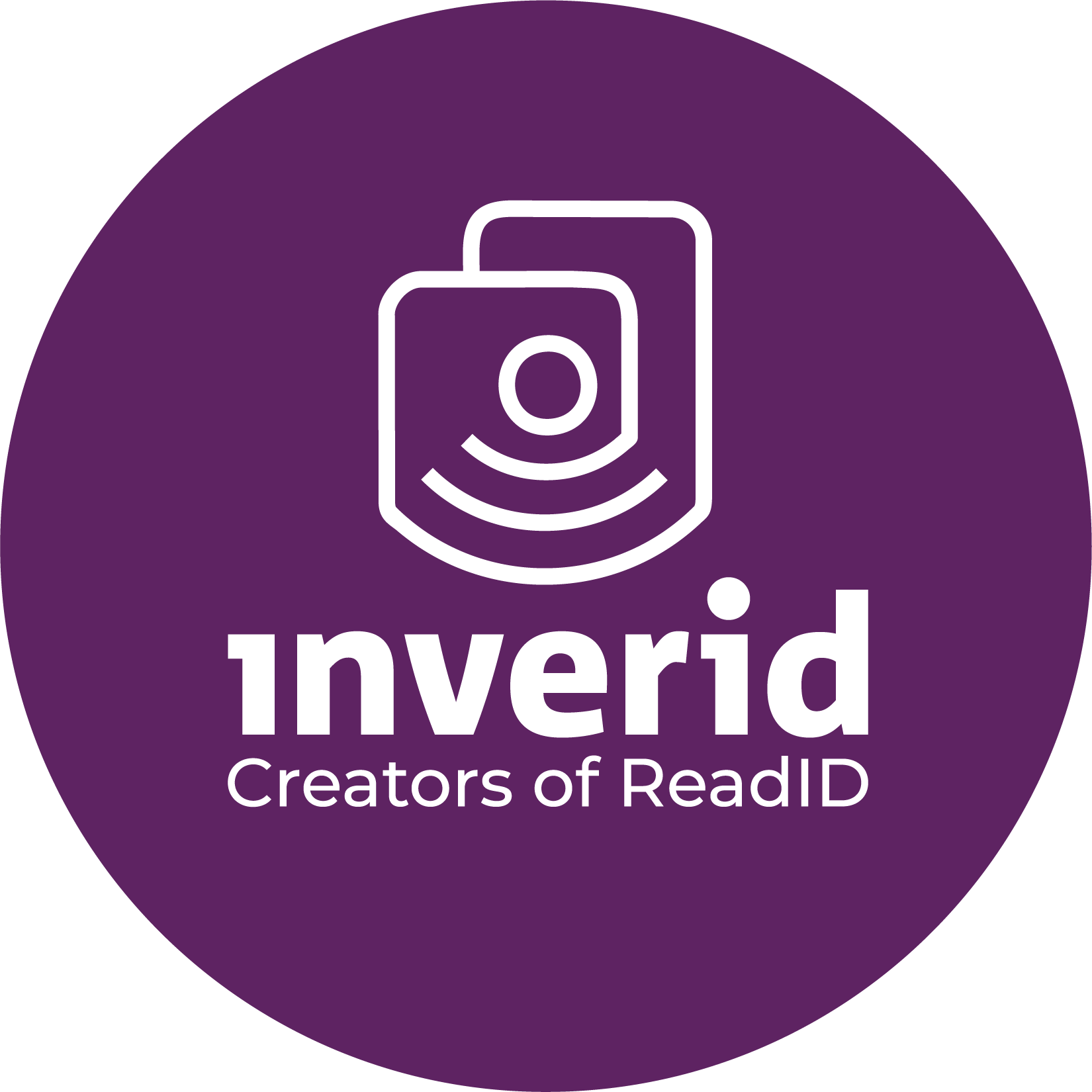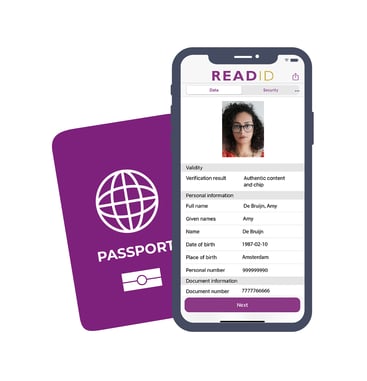As digitally accessible services grow, so too do the number of regulations they must comply with. Banks face strict Know Your Customer (KYC) and Anti-Money Laundering (AML) requirements, which require verifying the identity of new and recurring customers. This is a vital step in the customer journey as it ensures trust between the bank and regulators, and trust between the bank and its customers. Thanks to the prioritisation of digitalising services, customers can now open a new bank account in minutes with their smartphone as well as ensuring that they can still access that account if they switch to a new smartphone or lose their account credentials. Furthermore, legislators worldwide are gearing up for the digital future with digital identity wallets and national eID schemes growing in legislative attention.
Customers expect nothing less than complete security and convenience- so how can banks deliver this while still maintaining acceptable trust and preparing for widespread digital identity systems?
The current landscape of identity verification for banks
Banks face several challenges in verifying the identity of their customers and selecting a solution to do so.
- Trust – Gaining the maximum assurance of genuine identities
- Compliance – Ensure that any service provider enables compliance
- User Experience – Prevent churn through an easy-to-use process
To combat fraud and create a high conversion customer journey, many banks turn to remote identity verification via a smartphone. With this method, identity verification can be implemented into the bank’s mobile banking app, or users can be directed to a third-party app as part of another flow. However, not all identity verification technologies are created equal, and when trust and thus security is a top priority, it’s important that banks use the most secure solution they can.
OCR verification can no longer cut it for KYC
Optical identity verification solutions are popular among banks globally, with an easy-to-understand user flow and maximised document coverage. As AI becomes more mainstream, OCR (Optical Character Recognition) technology becomes more effective at verifying even more documents from around the world- and unfortunately, fake documents also become more effective at passing these verification attempts. This creates an unacceptable vulnerability in the KYC process for banks, but there is a more secure alternative that maintains an easy user flow in NFC-based identity verification.
How is NFC verification different from OCR?
The International Civil Aviation Organisation (ICAO) is part of the United Nations and determines the standards of chipped identity documents, including the information stored in chips and their security features. The chips and thus the personal information within them can be read with the use of Near Field Communication (NFC) technology, a capability most modern smartphones possess. NFC is the technology that enables contactless payments via smartphones, and thanks to this secure nature it is also ideal for remote identity document authentication.
These identity document chips are incredibly secure thanks to advanced cryptographic protocols. These protocols ensure that the chip cannot be skimmed by bad actors and also detect attempts at duplication or manipulation, making them an ideal method of document authentication. The contents of identity document chips are signed with cryptographic signatures from the issuing state, known as ‘country signing certificates’. These country signing certificates need a counterpart within an identity verification solution for the chip to be successfully read. ReadID has access to these country signing certificates, allowing it to read electronic identity documents from 172 countries and can also authenticate the document chips from 113 of these countries. For more information on ReadID’s document coverage, read our document expert’s analysis of ePassports and European identity cards.
How does NFC identity verification benefit banks?
The security by design inherent in NFC identity verification thanks to ICAO’s Doc 9303 standards makes it an ideal choice for banks, which need maximal trust to carry out their business. For secure KYC in banking, there is no better choice than NFC identity verification. Inverid has an industry first certification package which provides our banking customers with the highest assurance and enables us to serve other high trust businesses in the financial sector, such as UK-based AML check provider Thirdfort. They utilise ReadID to ensure they comply with HMRC standards and provide their legal and real estate clients with the most secure identity checks possible.
“We have grown the online channel for onboarding new customers from 35% to 60%.” - Evelien Mooij, Rabobank
Of course, the requirements for an identity verification solution go beyond just security for the bank itself and include providing a good experience for the end customer. Not only does good UX allow the customer to get through the verification process quickly, but it also creates high conversion for banks. Rabobank, one of the largest banks in the Netherlands, grew their online channel for onboarding new customers from 35% to 60% after implementing ReadID. Further customers in banking are ASB Bank in New Zealand and ING in the Netherlands who also make use of ReadID for improved customer experience and streamlined onboarding.
Up and running in weeks, not months
Traditional big name banks are perhaps considered slow-moving organisations in today’s world. Challenger banks are, as their name suggests, challenging this status quo in the financial sector by providing instant, innovative, and fully remote services to their customers via the use of their smartphones. Larger traditional banks are now also prioritising their innovation efforts, with mobile banking services being seen as standard by customers in many nations worldwide. How can they catch up to their fully digital counterparts? With ReadID. Not only is NFC the easiest way for banks to increase their compliance and conversion, but the implementation of ReadID can be as friction free as needed.
ReadID is available as both SDKs and a ready-to-use app, ReadID Ready. The ReadID SDKs allow for full customisation and can be implemented into an already existing app, such as a mobile banking app, to create trust with users via a known brand. Alternatively, ReadID Ready requires no development to implement and allows the verification flow to begin from a QR code scan (either digital or physical), app-to-app, or website flow. This creates accessibility for end users of all technological abilities to verify their identity from anywhere.
Future proofing in banking with NFC
It’s not just offering remote services that large banks need to be prepared to change for, but also the rise of digital identity systems such as wallets and national eID schemes. The European Union, as well as other bodies around the world, are gearing up for a digital future with various legislation. It is imperative that organisations such as banks begin to consider their options for complying with such legislation, and NFC is ideal for the ingestion of data into potential wallets and eID schemes. Furthermore, ReadID has already been implemented into some existing European national eID schemes, such as Belgian itsme, BankID in the Nordics, SmartID in the Baltics, with great success. NFC provides reliable identity verification with maximal security and minimal implementation effort.










